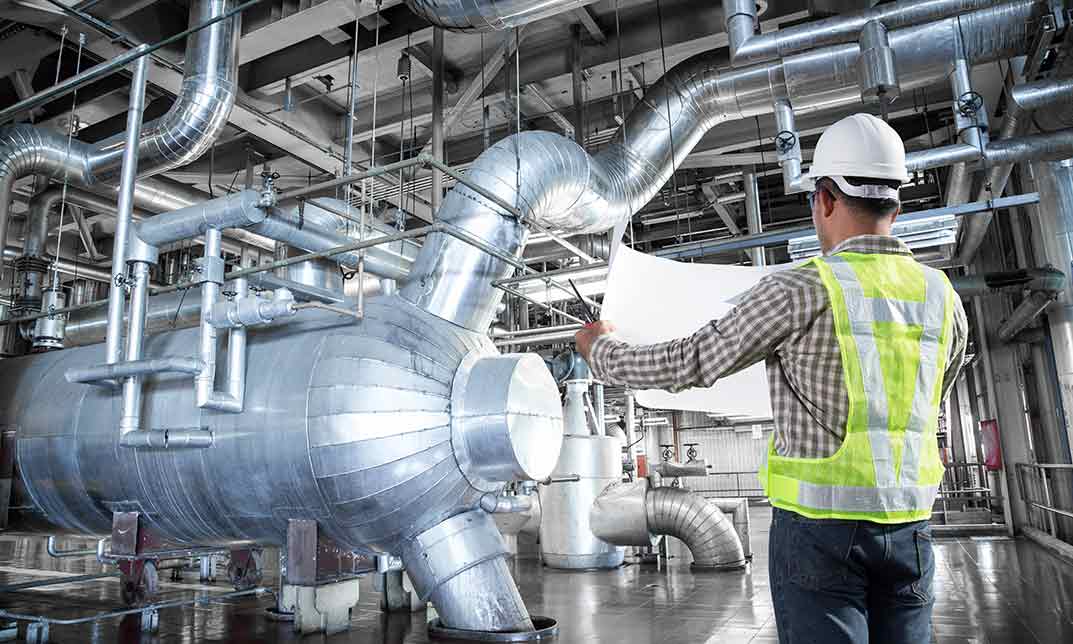 Course Highlights
Course Highlights
Looking to gain a thorough understanding of Piping & Instrumentation Diagrams (P&IDs)? Our online course is the ideal solution for both beginners and seasoned professionals. Our curriculum has been expertly crafted to cover all aspects of this intricate field.
In the first part of the course, we give a detailed introduction to P&IDs, explaining their importance in various engineering and industrial processes. A key part of this segment is dedicated to familiarizing you with the numerous symbols used in P&IDs. We have integrated practical exercises within the course content, allowing you to apply and practice using these symbols actively.
The course then progresses into an essential component of P&IDs – process control. We take you through the fundamental elements of control theory and elucidate the structure and functioning of Basic Process Control Systems (BPCS). Gaining a comprehensive understanding of these systems will significantly improve your grasp of P&IDs.
In the concluding part of the course, we concentrate on the safety systems in P&IDs, primarily focusing on Safety Instrumented Systems (SIS), interlocks, and alarms. These critical safety elements are thoroughly explained with the aid of real-life P&ID examples, enhancing your practical understanding.
Once you complete the Piping & Instrumentation Diagrams P&IDs course successfully, you’ll be awarded a certificate as a testament to your newfound expertise in P&IDs. Our course is a perfect blend of theoretical knowledge and practical application.
 Learning outcome
Learning outcome
- Gain a thorough understanding of P&IDs.
- Learn to identify and use P&ID symbols.
- Understand the basics and advanced concepts of process control.
- Grasp the workings of Safety Instrumented Systems (SIS).
- Be proficient in reading and creating P&IDs.
 Course media
Course media
 Why should I take this course?
Why should I take this course?
- Develop a vital skill for a variety of engineering disciplines.
- Improve your career prospects in fields like process engineering and plant design.
- Understand safety systems and their importance in industry.
- Develop a skill that's in high demand in sectors like oil and gas, and power generation.
- Get a certificate to validate your learning.
 Career Path
Career Path
- Process Engineer
- Piping Engineer
- Plant Designer
- Control Systems Engineer
- Safety Systems Engineer
 Requirements
Requirements
- Basic understanding of engineering concepts.
- A keen interest in learning about process and instrumentation diagrams.
- Internet access for online learning.
Course Curriculum
-
Introduction
00:04:00
-
What’s a P&ID ?
00:03:00
-
Why is a P&ID so important ?
00:02:00
-
Who uses P&ID’s ?
00:06:00
-
How do P&ID’s look like ?
00:08:00
-
Introduction- P&ID READING
00:02:00
-
Anatomy of a P&ID
00:01:00
-
The title block
00:03:00
-
The drawing scale
00:03:00
-
The grid system
00:02:00
-
The revision block
00:03:00
-
Changes
-
Notes and legends
00:03:00
-
Valve symbols
00:14:00
-
Valve actuator symbols
00:09:00
-
Control valve designations
00:02:00
-
Standards and conventions for valve status
00:07:00
-
Process equipment symbols
00:12:00
-
Piping symbols
00:03:00
-
Pipe fitting symbols
00:03:00
-
Isolating, venting & draining symbols for ease of maintenance
00:05:00
-
Instrumentation
00:03:00
-
Sensing devices and detectors
00:04:00
-
Location symbols
00:04:00
-
Modifiers and transmitters
00:05:00
-
Indicators and recorders
00:03:00
-
Controllers
00:03:00
-
Example #1 : Identifying process equipment and flow paths
00:05:00
-
Example #2 : Identifying valve position and failure mode
00:03:00
-
Example #3 : Identifying the symbols
00:02:00
-
Piping designation code
00:06:00
-
Equipment designation code
00:03:00
-
Instrument designation code
00:02:00
-
Miscellaneous designation codes
00:02:00
-
The process
00:01:00
-
Process control
00:06:00
-
The control loop
00:02:00
-
Process control terms
00:10:00
-
Control loops : Feedback control
00:02:00
-
Pressure control loops
00:01:00
-
Flow control loops
00:01:00
-
Level control loops
00:01:00
-
Temperature control loops
00:01:00
-
Multi-variable loops
00:02:00
-
Feedforward control
00:02:00
-
Feedforward + Feedback
00:01:00
-
Cascade control
00:08:00
-
Split range control
00:03:00
-
Operations on control signals
00:02:00
-
Ratio control
00:02:00
-
Batch control
00:01:00
-
Selective control
00:01:00
-
Do we need to control at all ?
00:01:00
-
Principles of equipment-wise control
00:10:00
-
Pipe control system
00:02:00
-
Control of a single pipe
00:02:00
-
Control of pressure in a pipe
00:03:00
-
Control of flow in a pipe
00:04:00
-
Flow splitting
00:05:00
-
Centrifugal pump control
00:04:00
-
Control valve vs Variable Frequency Drive (VFD) for centrifugal pumps
00:03:00
-
Minimum flow control for centrifugal pumps
00:09:00
-
Positive displacement pump control
00:02:00
-
Control by a recirculation pipe for PD pumps
00:03:00
-
Variable Speed Drive (VSD) control for PD pumps
00:01:00
-
Control by stroke adjustment for PD pumps
00:01:00
-
Compressor control system
00:02:00
-
Compressor capacity control
00:12:00
-
Compressor anti-surge control
00:03:00
-
Heat transfer equipment control
00:02:00
-
Heat exchanger direct control system
00:04:00
-
Heat exchanger bypass control system
00:04:00
-
Reactor temperature control
00:06:00
-
Air cooler control
00:02:00
-
Heat exchanger for heat recovery
00:01:00
-
Heat exchanger back pressure control
00:02:00
-
Basic fired heater control
00:08:00
-
Complex fired heater control
00:05:00
-
Container and vessel control
00:07:00
-
Container blanket gas control
00:02:00
-
Safety strategies
00:01:00
-
Concept of Safety Instrumented Systems (SIS)
00:01:00
-
SIS actions and types
00:14:00
-
SIS extent
00:02:00
-
SIS requirement
00:03:00
-
Anatomy of a SIS
00:02:00
-
SIS element symbols
00:01:00
-
SIS primary elements : Sensors
00:03:00
-
SIS final elements
00:04:00
-
Switching valve actuator arrangements
00:02:00
-
Valve position validation
00:02:00
-
Merging a switching valve and a control valve
00:03:00
-
SIS logics
00:01:00
-
Showing safety instrumented functions on P&ID’s
00:07:00
-
Discrete control
00:05:00
-
Alarm system
00:02:00
-
Anatomy of alarm systems
00:02:00
-
Alarm requirements
00:06:00
-
Alarm system symbology in P&ID’s
00:06:00
-
Concept of common alarms
00:01:00
-
Fire and Gas Detection Systems (FGS)
00:03:00
-
Electric motor control
00:07:00
-
P&ID representation of commands and responses
00:05:00
-
P&ID example of electro-motor control
00:04:00
-
P&ID example #1 : Legend and specifications
00:05:00
-
P&ID example #2 : Hydrogen delivery station
00:16:00
-
P&ID example #3 : Acid system
00:13:00
-
P&ID example #4 : Centrifugal pump
00:09:00
-
P&ID example #5 : Utility station
00:04:00
-
P&ID example #6 : Waste water filter
-
P&ID example #7 : Steam separator
00:15:00
-
P&ID example #8 : Flare knock-out drum
00:14:00
-
P&ID example #9 : Centrifugal compressor
00:05:00
-
P&ID example #10 : Hydrogen production from shale gas
00:11:00
-
P&ID example #11 : Fired heater
00:07:00
-
Resources – Advanced Piping & Instrumentation Diagrams P&IDs
14-Day Money-Back Guarantee
-
Duration:8 hours, 3 minutes
-
Access:1 Year
-
Units:116



Want to get everything for £149
Take Lifetime Pack




